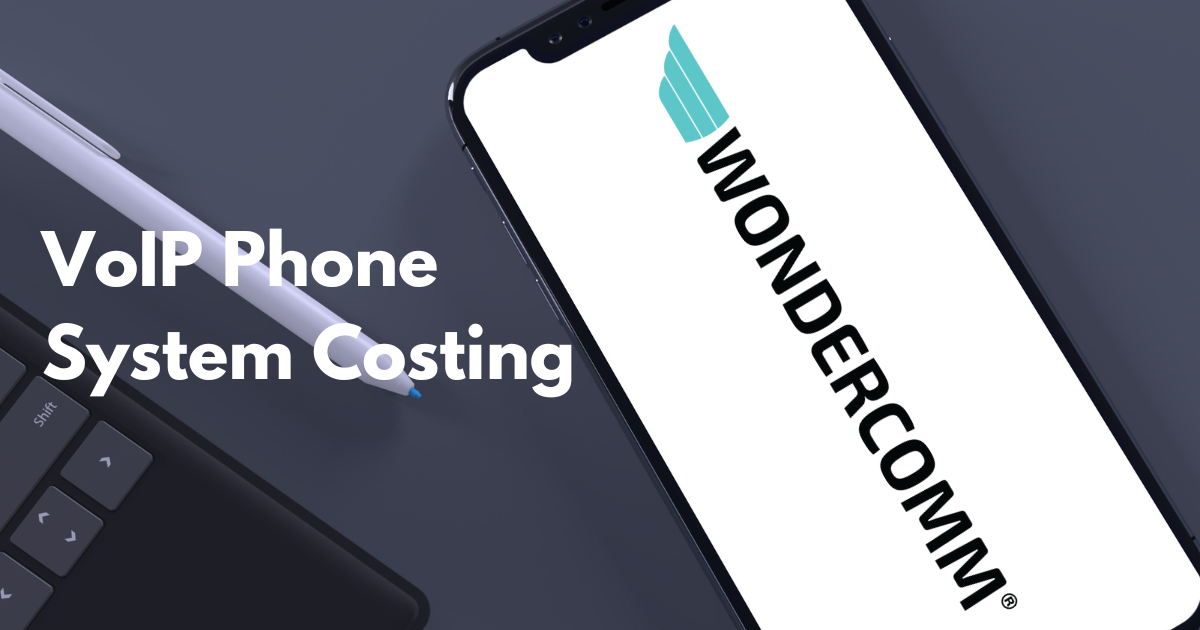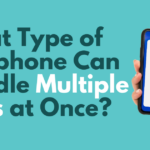With the rise of remote work and global connectivity, companies are increasingly turning to Voice over Internet Protocol (VoIP) as a cost-effective solution for their communication needs. But just how much can businesses save by switching to VoIP? In this article, we’ll dive into the breakdown of VoIP cost compared to traditional phone systems, exploring the key factors that make VoIP a more affordable choice for businesses of all sizes.
Brief Overview of the Increasing Popularity of VoIP
Voice over Internet Protocol (VoIP) has emerged as a game-changer in the realm of business communication. By utilizing internet connections to facilitate voice calls, VoIP offers a cost-effective alternative to traditional phone systems. Over the past decade, VoIP adoption has skyrocketed, with businesses of all sizes recognizing the numerous benefits it offers.
Importance of Cost-Effectiveness in Business Communication
In today’s competitive business landscape, cost-effectiveness is a crucial factor for success. Communication plays a pivotal role in business operations, enabling collaboration, customer interaction, and decision-making. However, traditional phone systems can incur substantial costs, especially for businesses with high call volumes or international communication needs. As a result, businesses are increasingly seeking more affordable alternatives that can deliver the same level of functionality and reliability.
Why VoIP is Gaining Traction Due to its Cost-Effectiveness and Other Benefits
One of the primary reasons for VoIP’s surge in popularity is its cost-effectiveness and VoIP phone price. Unlike traditional phone systems that require dedicated infrastructure and incur high maintenance costs, VoIP leverages existing internet connections, significantly reducing setup and operational expenses. Additionally, VoIP providers offer competitive pricing plans for local, long-distance, and international calls, making it an attractive option for businesses looking to minimize communication costs.
Apart from cost savings from VoIP pricing , VoIP offers a plethora of other benefits. It provides greater flexibility, allowing employees to make and receive calls from anywhere with an internet connection. VoIP also offers advanced features such as voicemail-to-email transcription, call forwarding, and video conferencing, enhancing productivity and collaboration among team members.
VoIP is highly scalable, making it ideal for businesses of all sizes. Whether you’re a small startup or a large enterprise, VoIP can seamlessly adapt to your evolving communication needs without the need for costly infrastructure upgrades.
VoIP’s increasing popularity can be attributed to its cost-effectiveness, flexibility, scalability, and advanced features. As businesses continue to prioritize cost-effective communication solutions, VoIP is expected to remain a key player in the future of business communication.
VoIP Technology and How it Differs from Traditional Phone Systems
Voice over Internet Protocol (VoIP) is a technology that enables voice communication over the internet. Unlike traditional phone systems that rely on copper wires and analog signals, VoIP converts voice into digital data packets that are transmitted over the internet. This digital transmission results in clearer audio quality and more efficient use of bandwidth compared to traditional landline phones.
One of the key differences between VoIP and traditional phone systems is the infrastructure required. Traditional phone systems require dedicated lines and hardware, which can be costly to install and maintain. In contrast, VoIP utilizes existing internet infrastructure, eliminating the need for separate phone lines and reducing setup and maintenance costs thus reducing overall VoIP phone cost.
Factors Influencing VoIP Costs, Including Setup, Equipment, and Ongoing Fees
The VoIP cost can vary depending on several factors. One of the primary costs is the setup of the VoIP system, which includes the installation of hardware and software. While some VoIP systems can be set up using existing equipment, others may require the purchase of new hardware, such as IP phones or adapters.
In addition to setup costs, businesses also need to consider ongoing fees associated with VoIP. These fees can include subscription costs for VoIP service, which can vary depending on the provider and the features included in the plan. Businesses also need to budget for long-distance and international call rates, as well as any additional features or services they may require, such as voicemail or call forwarding.
It’s important for businesses to carefully assess their communication needs and budget when considering a VoIP system. While VoIP can offer significant cost savings compared to traditional phone systems, it’s essential to choose a VoIP solution that aligns with your budget and provides the features and reliability your business requires.
Comparing VoIP Costs to Traditional Phone Systems
Breakdown of Initial Setup Costs for Both VoIP and Traditional Systems
When comparing the initial setup costs of VoIP and traditional phone systems, it’s essential to consider several factors. For VoIP systems, the setup costs typically include the following:
- Hardware: VoIP systems require IP phones or adapters to convert analog signals to digital data. The cost of these devices can vary depending on the brand and features.
- Software: VoIP systems often require software licenses for call management and other features. The cost of these licenses can vary depending on the provider.
- Installation: While some VoIP systems can be set up by the business itself, others may require professional installation, which can incur additional costs.
In comparison, traditional phone systems require the following setup costs:
- Hardware: Traditional phone systems require dedicated phone lines (PRIs/T5 lines), PBX (Private Branch Exchange) equipment that is old and outdated, and legacy handsets. The cost of this hardware can be substantial, especially for larger installations.
- Installation: Traditional phone systems also require professional installation, which can add to the overall setup costs.
Overall, VoIP systems tend to have lower initial setup costs compared to traditional phone systems, primarily due to their reliance on existing internet infrastructure and less expensive hardware.
Comparison of Monthly Service Fees, Including Subscription Costs and Call Rates
When comparing the monthly service fees of VoIP and traditional phone systems, there are several factors to consider. For VoIP systems, the monthly fees typically include the following:
- Subscription: VoIP providers offer various subscription plans based on the number of users and features required. The cost of these plans can vary but is generally lower than traditional phone service. Wondercomm monthly plans start as low as $14.99/month.
- Call Rates: VoIP providers often offer competitive call rates for local, long-distance, and international calls. These rates can vary depending on the provider and the destination of the call.
In comparison, traditional phone systems have the following monthly service fees:
- Line Rental: Traditional phone service providers charge a monthly rental fee for each phone line (generally $500 per month or more). This fee can vary depending on the provider and the number of lines required.
- Call Charges: Traditional phone service providers also charge per-minute call rates for local, long-distance, and international calls. These rates can be higher than VoIP call rates.
Overall, VoIP systems tend to have lower monthly service fees compared to traditional phone systems, making them a more cost-effective option for businesses.
Examination of Maintenance and Support Costs for VoIP Versus Traditional Systems
Maintenance and support costs are another important factor to consider when comparing VoIP costs and traditional phone systems. For VoIP systems, maintenance and support costs typically include the following:
- Updates and Upgrades: VoIP systems require regular updates and upgrades to ensure they are secure and operating efficiently. Some providers include these updates and upgrades as part of their service, while others may charge additional fees.
- Technical Support: VoIP systems may require technical support for troubleshooting issues or configuring new features. Some providers offer technical support as part of their service, while others may charge for this service. With Wondercomm, tech support is available free of charge.
In comparison, traditional phone systems have the following maintenance and support costs:
- Maintenance Contracts: Traditional phone systems often require maintenance contracts with the provider to ensure they are operating correctly. These contracts can add to the overall cost of the system.
- Technical Support: Similar to VoIP systems, traditional phone systems may require technical support for troubleshooting and configuration. However, this support is often included in the maintenance contract.
Overall, VoIP systems tend to have lower maintenance and support costs compared to traditional phone systems, primarily due to their simpler infrastructure and reliance on software-based solutions.
Please note that the costs provided in this section are general estimates and may vary based on the specific requirements of each business and the providers’ pricing models. For accurate pricing information, it’s recommended to contact the providers directly or visit their websites.
Cost Savings with VoIP
Small Business that Switch to VoIP and See Significant Cost Savings
Consider a small business with ten employees that provides consulting services to clients worldwide. Prior to switching to Wondercomm VoIP, they relied on traditional phone systems for communication, which incurred high monthly service fees and long-distance call charges. Additionally, the company had to maintain a dedicated phone line, a phone number and FAX for each employee, leading to increased infrastructure costs.
After switching to Wondercomm VoIP solution, they saw a significant reduction in their communication costs. VoIP’s competitive call rates and subscription plans allowed the company to save up to 70% on their monthly phone bills. Furthermore, Wondercomm’s flexibility and scalability enabled them to add new phone lines (users/extensions and numbers) and features as their business grew, without the need for costly infrastructure upgrades.
Medium-sized Company that Benefited from VoIP’s Scalability and Reduced Infrastructure Costs
One of Wondercomm’s customer is a Manufacturing business and is a medium-sized company with around 100 employees that specializes in manufacturing construction and automotive parts. As they expanded their operations to new locations, the company faced challenges with its traditional phone systems, which were expensive to set up and maintain across multiple sites. The support costs were outrageously out of control and were burning through the company’s financials.
By switching to Wondercomm, they were able to centralize the communication infrastructure and reduce the need for expensive hardware at each location. VoIP’s scalability allowed the company to add new users, extensions, numbers and features as needed, without the need for costly infrastructure upgrades. As a result, they were able to reduce their communication costs by 50% and improve efficiency across the entire organization.
Conclusion
In conclusion, Voice over Internet Protocol (VoIP) has emerged as a cost-effective and efficient communication solution for businesses of all sizes. With its ability to leverage existing internet infrastructure and offer competitive pricing plans, VoIP has become increasingly popular among businesses seeking to reduce communication costs and improve efficiency.
As highlighted in this article, VoIP offers significant cost savings compared to traditional phone systems, thanks to its lower setup and maintenance costs, competitive call rates, and advanced features. Businesses that switch to VoIP can expect to save money while enjoying greater flexibility, scalability, and functionality in their communication systems.





Leave a reply